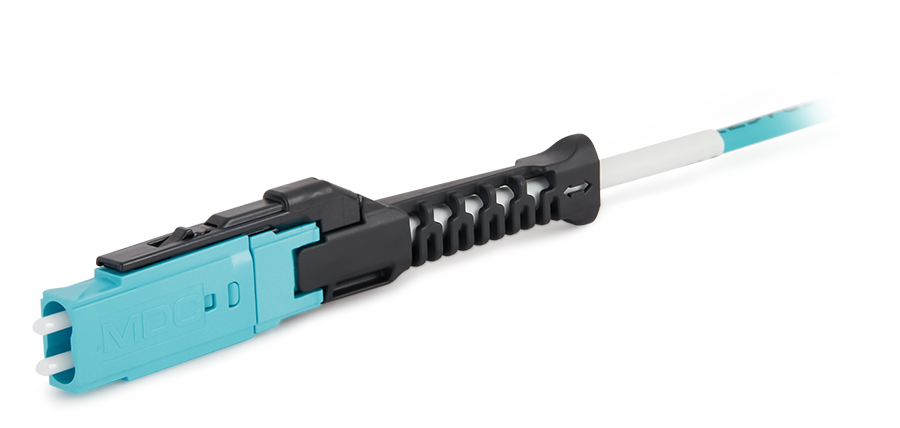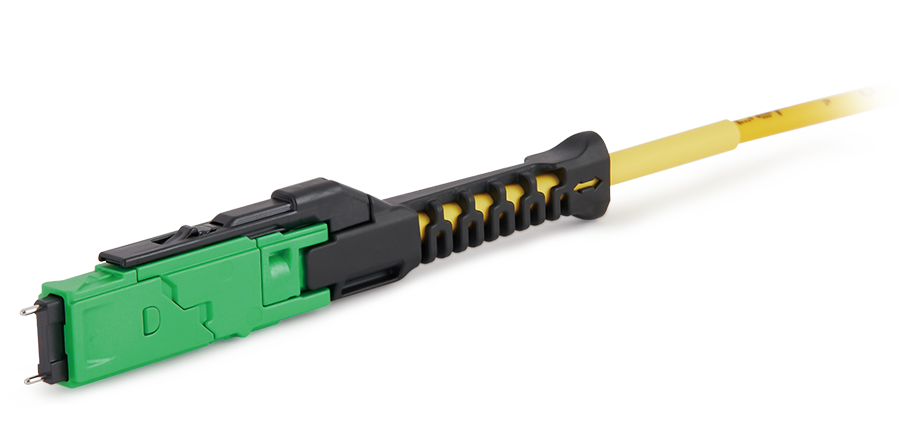An optical splitter is a passive optical device that can split an input optical signal into multiple output optical signals, and is widely used in passive optical fiber networks. According to the different working principles, the optical splitter is divided into PLC splitter (planar waveguide optical splitter) and FBT optical splitter (fused taper optical splitter), then what do you know about these two optical splitters? What is the difference between them?
Ⅰ. Briefly describe PLC splitter and FBT optical splitter
First of all, before understanding the difference between PLC optical splitter and FBT optical splitter, let's briefly understand these two optical splitters.
1. Overview of PLC splitter
PLC splitters provide a better solution for applications requiring larger split configurations. To achieve this, waveguides are fabricated onto a quartz glass substrate using photolithographic techniques, allowing a specific percentage of light to be routed.
Usually, the optical splitting ratio of PLC optical splitter is 1:2/1:4/1:8/1:16/1:32/1:64. It has bare fiber PLC optical splitter, miniature steel tube PLC Splitter, ABS box-type PLC optical splitter, PLC optical splitter with splitter, tray-type PLC optical splitter, rack-mounted PLC optical splitter, LGX optical splitter and micro plug-in PLC Optical splitter, etc.
2. Overview of FBT Optical Splitter
The FBT optical splitter adopts traditional passive device fabrication technology, which bundles two or more fibers together and realizes melting and drawing through a cone-drawing machine. Since the spliced optical fiber is relatively fragile, a glass tube made of epoxy resin and silica is usually covered outside the spliced optical fiber. At the same time, a layer of stainless steel tube is covered outside the glass tube, and finally sealed with silicon.
Ⅱ. The difference between PLC splitter and FBT optical splitter
It can be seen from the above that the production process of PLC optical splitter and FBT optical splitter is different. In addition, these two optical splitters also have the following differences:
1. Working wavelength
The working wavelength of the PLC optical splitter is between 1260nm and 1650nm, and the wavelength can be adjusted to support more application environments; while the FBT optical splitter only supports three wavelengths of 850nm/1310nm/1550nm and cannot work at other wavelengths.
2. Spectral ratio
The splitting ratio refers to the ratio of the input optical signal to the output optical signal of the optical splitter. The splitting ratio of PLC splitter is as high as 1:64, while the splitting ratio of FBT optical splitter is 1:32. Relatively speaking, PLC optical splitter can provide higher reliability. However, the optical division ratio of FBT optical splitter is variable and supports customization, such as 1:3, 1:7, 1:11, while PLC optical splitters mostly choose 1:2, 1:4, 1:8, 1:16, 1:32, 1:64, etc.
3. Spectroscopic uniformity
The PLC splitter can achieve equal-ratio uniform splitting, while the FBT optical splitter is made up of multiple 1x2 connections. It lacks signal management and cannot achieve uniform splitting. Moreover, the larger the splitting ratio, the worse the uniformity, which affects the transmission distance.
4. Failure rate
At present, the mature taper drawing process can only pull less than 1x4 at a time. Therefore, when the splitting ratio is greater than 1:8, the FBT optical splitter needs more than 7 1x2 connection packages, which is prone to errors and failures. That is to say, the greater the splitting ratio of the FBT optical splitter, the greater the failure rate. The failure rate of PLC optical splitter is much smaller than that of FBT optical splitter.
5. Temperature
Temperature is a key factor affecting the insertion loss of optical devices, therefore, the stability of temperature plays a crucial role in the performance of the device. PLC optical splitter can work stably at -40~85℃, while FBT optical splitter has a working temperature range of -5~75℃. Relatively speaking, PLC splitter has a wider operating temperature range, and in extreme environments also maintain good performance.
In general, PLC optical splitter and FBT optical splitter have many differences in manufacturing process, operating wavelength, temperature, etc. except for the similar appearance and size.

 Fiber Optic Flex Circuit (FOFC)
Advanced Simulation & Optimization, High Positioning Accuracy, Flexible Customization, Rigorous Reliability Testing
Fiber Optic Flex Circuit (FOFC)
Advanced Simulation & Optimization, High Positioning Accuracy, Flexible Customization, Rigorous Reliability Testing MDC Solution
US Conec's MDC connector is a Very Small Form Factor (VSFF) duplex optical connector, expertly designed for terminating single-mode and multimode fiber cables with diameters up to 2.0mm.
MDC Solution
US Conec's MDC connector is a Very Small Form Factor (VSFF) duplex optical connector, expertly designed for terminating single-mode and multimode fiber cables with diameters up to 2.0mm. MMC Solution
US Conec's Very Small Form Factor (VSFF) multi-fiber optical connector that redefines high-density connectivity with its cutting-edge TMT ferrule technology and intuitive Direct-Conec™ push-pull boot design.
MMC Solution
US Conec's Very Small Form Factor (VSFF) multi-fiber optical connector that redefines high-density connectivity with its cutting-edge TMT ferrule technology and intuitive Direct-Conec™ push-pull boot design. EN
EN
 jp
jp  fr
fr  es
es  it
it  ru
ru  pt
pt  ar
ar  el
el  nl
nl 



_and_High-Reflection_(HR)_Optical_Coatings.webp)
